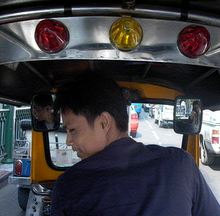For a while I’ve been thinking that the previous title of this blog – Space & (Indonesian) Society – hasn’t quite captured the development of my own thoughts over time. But I couldn’t quite pin point what are the threads of my interests and writings that have been captured within. Yesterday, an idea that has always been there hit me: It’s Italo Calvino’s quotation that I put under the title of my blog, cited from none other than his famous Invisible Cities.
In Invisible Cities, Italo Calvino told a story of the journeys of Marco Polo, as being told to Kublai Khan. The presentation of the journeys was captured under different headings categorized as Cities and memory, Cities and desire, Cities and signs, Thin cities, Trading cities, Cities and eyes, Cities and names, Cities and the dead, Cities and the sky, Continuous cities, and Hidden cities, with five different journeys for every heading. The beauty of this work, apart from its exquisitely imaginative story and structure, (and I recommend you skip this next part if you haven’t read the book) is because all those journeys describe a city none other than Venice. One city, fifty five presentations/ interpretations: All trailing along different parts and perspectives of Venice.
While this blog is anything but about one subject matter, it is a continuous effort to shape my own thinking and interests, trying to find what connection there is, what may emerge from all this. And without realizing, I have been utilizing the same method that I’m most familiar with as a trained architect, but using a different language: Tracing in words what I used to trace in graphics.
In the world of architecture, to trace is to make lines over and over an older or another drawing (usually a site or an already existing or established design), trying to give a new form to the emerging design, to get to a point when suddenly all the elements seem to fall into place and the solution feels most right and logically elegant. Among its many other descriptions, some definition of “trace” and “to trace” captures many of the things that I’ve been trying to do: copying and quoting other people’s writings, going over certain topics over and over again, and, less often but more personally desired, making correlations among seemingly divergent topics – be they clear and visible or otherwise invisible to everyone including myself.
While I don’t expect to become Marco Polo or Italo Calvino, I do hope, at the end of it all, I will find my Venice.
So, as a tribute to Italo Calvino’s Invisible Cities and my ingrained method of a previous life, I have decided to change the name of this blog to (In)visible Traces. For those of you that have links to this blog using the old name, please kindly revise, and I hope this will happen even less frequently in the future.

